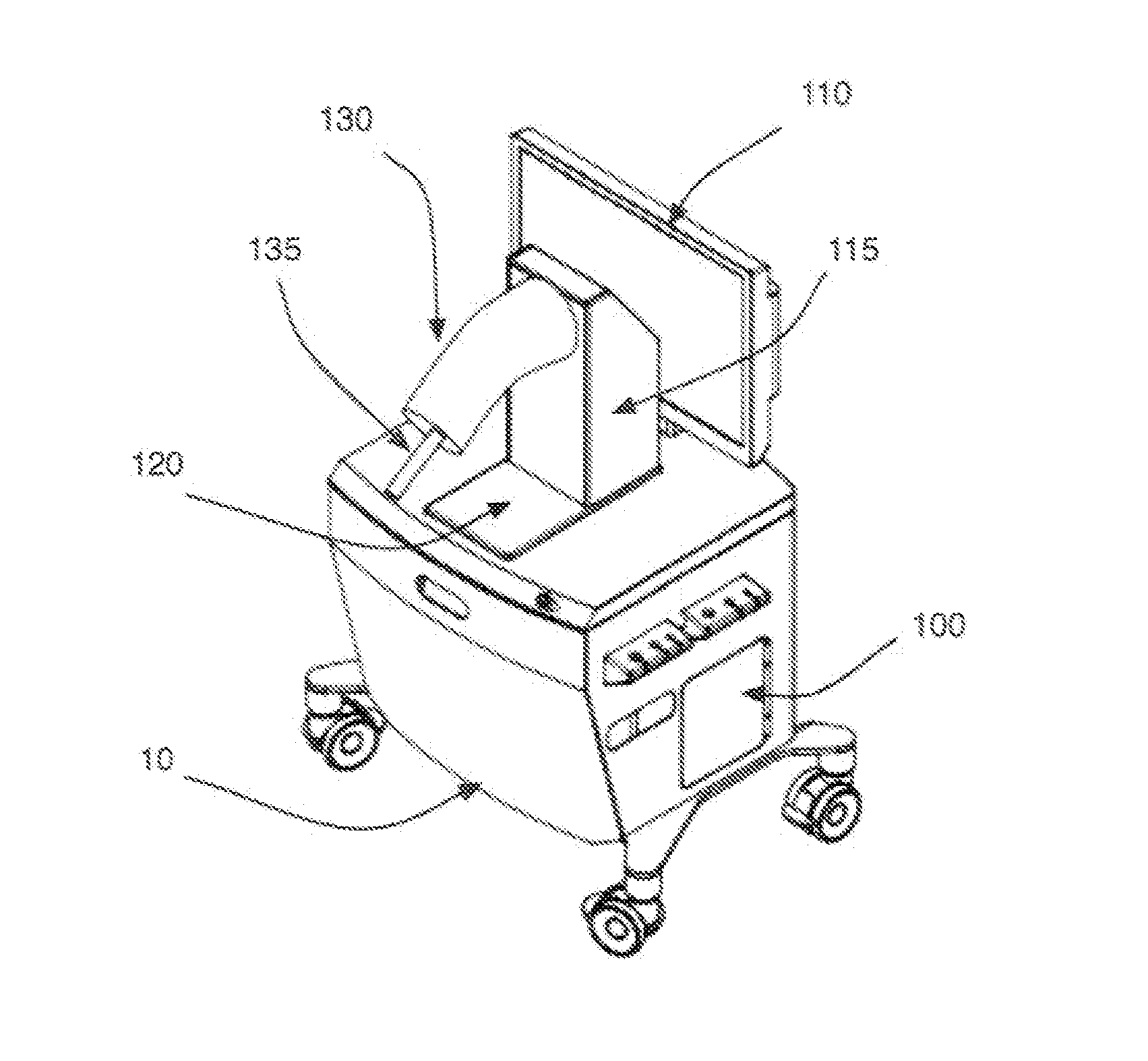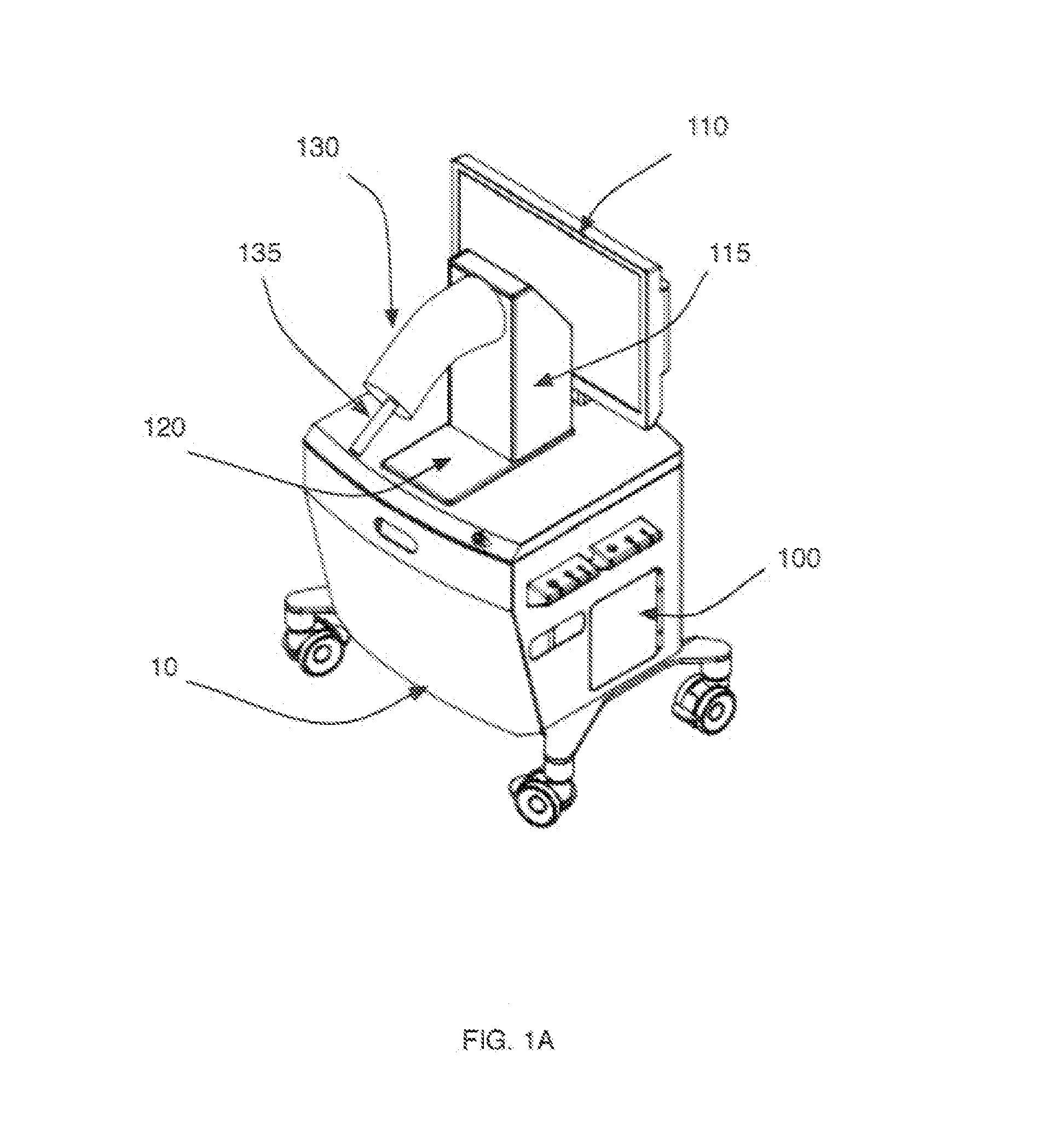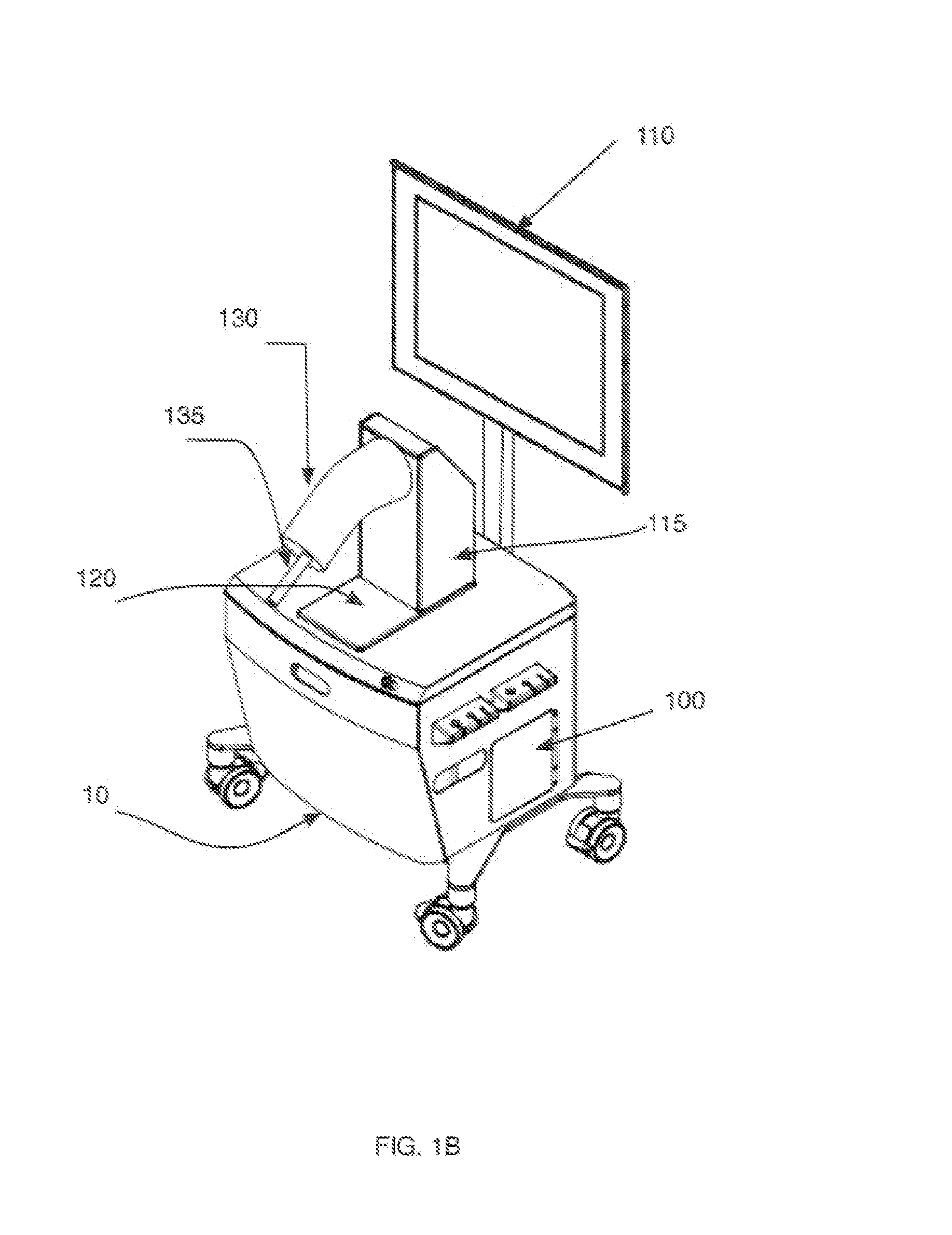Medical Simulation System and Method with Configurable Anatomy Model Manufacturing
a medical simulation and configurable technology, applied in the field of computerized medical simulation, can solve the problems of requiring regular maintenance, unable to provide realistic simulation, and limited degree of tool movement due to mechanical configuration of the device, so as to facilitate the daily operation and maintenance of the simulation training room, and facilitate the training of physicians.
- Summary
- Abstract
- Description
- Claims
- Application Information
AI Technical Summary
Benefits of technology
Problems solved by technology
Method used
Image
Examples
Embodiment Construction
[0022]FIGS. 1A-1B represent a medical procedure VR / AR simulator cart 10 comprising a data processing unit 100, a display screen 110, and a plug 120 adapted to receive a human anatomy model 130, according to an embodiment of the invention. For the purpose of illustration, in FIGS. 1A-1B, a human anatomy model 130 of a knee joint is shown, but other models can be used as well. The human anatomy model 130 may be made of flexible plastic or any other suitable material. The knee model of FIGS. 1A-1B can be manipulated with the handle 135 to reproduce model motion and deformation. For example, the knee model 130 can be manipulated to simulate various leg flexion angles and / or various valgus-varus angles. The anatomy model 130 may be fastened to the cart 10 in such a way that it may be easily plugged in and out, for instance by clipping it onto the cart, while reproducing a real organ position in the operating room. In the embodiment of FIGS. 1A-1B, the knee model 130 is fastened to a vert...
PUM
 Login to View More
Login to View More Abstract
Description
Claims
Application Information
 Login to View More
Login to View More - R&D
- Intellectual Property
- Life Sciences
- Materials
- Tech Scout
- Unparalleled Data Quality
- Higher Quality Content
- 60% Fewer Hallucinations
Browse by: Latest US Patents, China's latest patents, Technical Efficacy Thesaurus, Application Domain, Technology Topic, Popular Technical Reports.
© 2025 PatSnap. All rights reserved.Legal|Privacy policy|Modern Slavery Act Transparency Statement|Sitemap|About US| Contact US: help@patsnap.com



